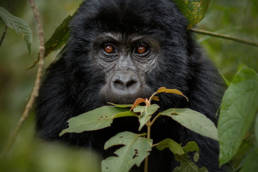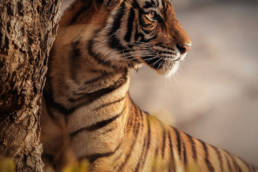Snow Leopard
~ 3.500 – 7.500 worldwide
Snow Leopard
Introduction
The elusive and largely solitary snow leopard (Panthera uncia) inhabits remote, arid and rugged mountainous areas of Central and South Asia. A single adult male needs between 200-400 km² natural habitat to survive, mostly above the tree line and up to 5000 meters above sea level. The snow leopard´s distribution generally reflects the availability of prey, which mainly consists of large ungulates including the Asiatic ibex, the argali sheep, and other smaller animals such as marmots, hares or pikas.
Where they can be found
The snow leopard´s current range is estimated to extend over 1.9 million km2, and includes mountainous regions of 12 countries of Central and South Asia: Afghanistan, Bhutan, China, India, Kazakhstan, Kyrgyz Republic, Mongolia, Nepal, Pakistan, Russian Federation, Tajikistan, and Uzbekistan. In this vast area, only 3,500 to 7,500 wild snow leopards are thought to remain. The international community acknowledges the need to protect the snow leopard, which is listed as Vulnerable on the IUCN Red List of Threatened Species and under Appendix I of the Convention on International Trade in Endangered Species of Fauna and Flora (CITES). Currently the Vanishing Treasures programme focuses on the two Central Asian countries Kyrgyzstan and Tajikistan, where the majority of the snow leopards in Central Asia live. These two countries are home to about 150 and between 250 to 280 snow leopards respectively.
© Tashi R. Ghale
Why they are important
As an apex predator, snow leopards play an important role in regulating their prey populations and in doing so, maintaining healthy, high mountain landscapes. Due to their large home ranges, snow leopards are also considered an “umbrella species”, meaning that protecting the snow leopard will positively affect other species sharing their habitat, including charismatic ones like the grey wolf and the Eurasian lynx.
How they are threatened
Rural, mountainous communities in both Kyrgyzstan and Tajikistan rely heavily on livestock herding, which is perceived as a profitable activity and safe investment. Human activities and growing livestock herds in some areas have led to the degradation of pastureland and wildlife habitats, resulting in increased competition for food and decline of ungulates on which the snow leopard preys. In some places, livestock depredation has led to significant human-wildlife conflict and retaliatory killings. Other threats include poaching and unregulated hunting and trade of snow leopards and their prey.
Fragmentation of the snow leopard and its prey’s habitat is also a major threat: new roads or fences and industrial activities such as mining can have a negative impact if developed without consideration of the habitat requirements of the snow leopard and its prey.
In addition, climate change is expected to aggravate these existing threats. For the snow leopard´s entire range across Asia, models predict a northern shift of suitable habitats, pushing the snow leopard to more remote and high-altitude areas.
Climate change impact on human-wildlife conflict
Impacts on the snow leopard
 direct
direct indirect
For more information and in-depth graphics click here: Snow Leopard – Species Brief
Climate change is also expected to lead more localized pressures both on communities and snow leopards and their prey, increasing the level of human-wildlife conflict. One possible scenario is illustrated in the figure shown above. With warmer temperatures, certain rangelands are expected to shift or extend to higher altitudes, due to a change in plant phenology, creating more ideal conditions for plants to grow at higher altitudes. These rangelands are used as grazing grounds by both wild ungulates and livestock. This upward shift will expand the opportunities for grazing livestock at higher altitudes, which will increase competition with wild ungulates for resources, likely leading to a decrease in populations of wild snow leopard prey. The snow leopard, being at the end of this chain, will have fewer wild prey available, inducing more attacks on livestock and in turn increasing the retaliatory killings by local communities.

